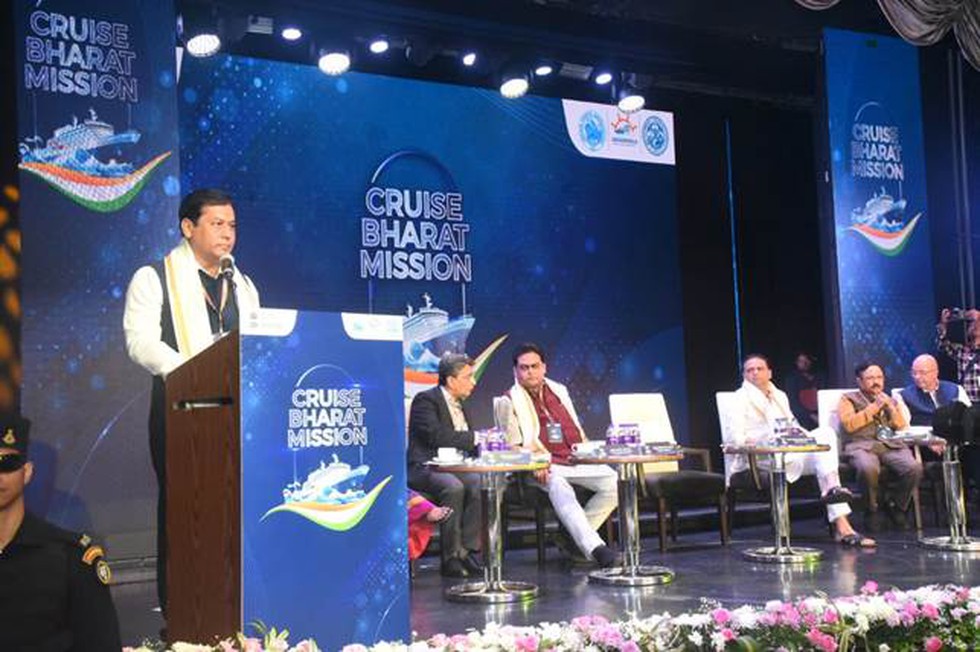
About Cruise Bharat Mission:
- It is aimed at boosting the tremendous potential of cruise tourism in the country and to propel the country’s cruise tourism industry by doubling cruise passenger traffic within five years; i.e. by 2029.
- It will be implemented in three phases, beginning from 1 October 2024 up to 31 March 2029.
- Phase 1 (01.10.2024 – 30.09.2025) will focus on conducting studies, master planning, and forming cruise alliances with neighbouring countries. It will also modernise existing cruise terminals, marinas, and destinations to enhance the potential of cruise circuits.
- Phase 2 (01.10.2025 – 31.03.2027) will concentrate on developing new cruise terminals, marinas, and destinations to activate high-potential cruise locations and circuits.
- Phase 3 (01.04.2027 – 31.03.2029) will focus on integrating all cruise circuits across the Indian Subcontinent, marking the maturity of the cruise ecosystem while continuing the development of cruise terminals, marinas, and destinations.
- The mission has identified key initiatives across five strategic pillars.
- The Sustainable Infrastructure & Capital: It addresses infrastructure gaps, focusing on developing world-class terminals, marinas, water aerodromes, and heliports, alongside digitalisation (e.g., facial recognition) and decarbonisation (e.g., shore power). It includes creating a National Cruise Infrastructure Masterplan 2047, setting up a cruise-focused SPV under the Indian Ports Association (IPA), and establishing a cruise development fund.
- The Operations Including Technology Enabled: This pillar aims to streamline operations, ensuring smooth embarkation, disembarkation, and destination visits with a focus on digital solutions such as e-clearance systems and e-visa facilities.
- The Cruise Promotion & Circuit Integration: It focuses on international marketing and investment promotion, including linking cruise circuits, hosting events like the "Cruise India Summit," and forming alliances with neighbouring countries.
- The Regulatory, Fiscal & Financial Policy: This pillar is centred on creating tailored fiscal and financial policies, with a focus on tax scenarios, cruise regulations and the launch of a National Cruise Tourism Policy.
- The Capacity Building and Economic Research: This pillar emphasizes skill development, creating a Centre of Excellence for cruise-related economic research, and formulating National Occupational Standards to promote youth employment in the cruise industry.
Nodal Ministry: Union Ministry of Ports, Shipping & Waterways
2. Overseas Citizen of India
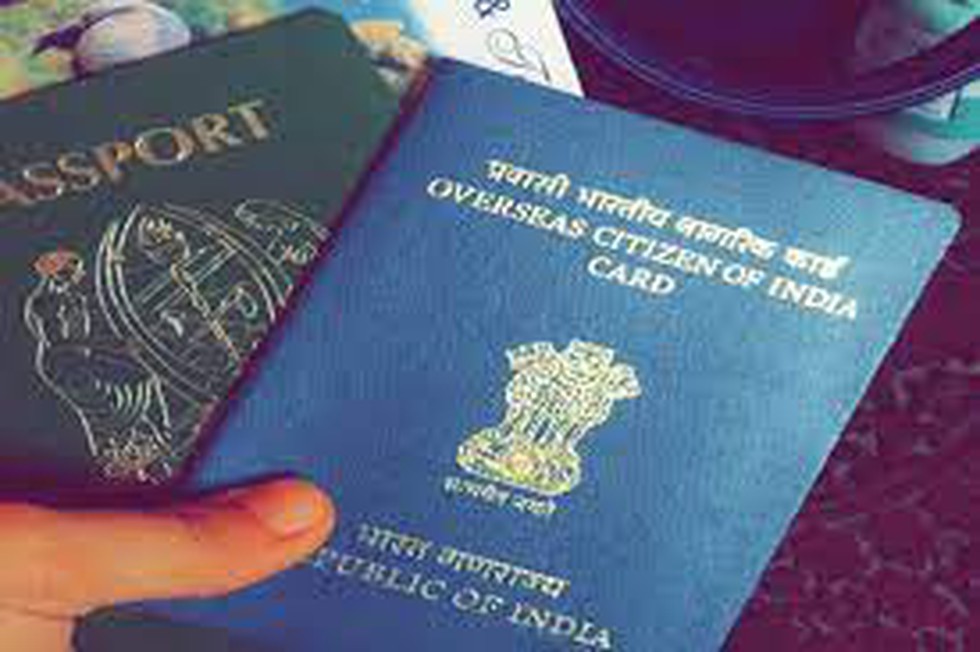
About Overseas Citizen of India:
- The Overseas Citizen of India (OCI) scheme was introduced in August 2005 which provides for registration of all Persons of Indian Origin (PIOs) who were citizens of India on January 26, 1950, or thereafter, or were eligible to become citizens of India on the said date.
Who cannot be an OCI?
- An applicant is not eligible to get an OCI card if his/her parents or grandparents have ever been a citizen of Pakistan or Bangladesh.
- Foreign military personnel either in service or retired are also not entitled to grant of OCI.
- However, the spouse of foreign origin of a citizen of India or spouse of foreign origin of an OCI, whose marriage has been registered and subsisted for not less than two years, can apply for an OCI card.
- Advantages of OCI cardholders:
- An OCI card holder — essentially a foreign passport holder — gets a multiple entry, multi-purpose life-long visa for visiting India, and is exempt from registration with local police authority for any length of stay in the country.
- The OCI cardholder is
- Not entitled to vote; to be a member of a Legislative Assembly or of a Legislative Council or of Parliament; to hold Indian constitutional posts such as that of the President, Vice President, Judge of the Supreme Court or High Court.
- He or she cannot normally hold employment in the government.
Latest rules regarding OCIs
- On March 4, 2021, the Ministry of Home Affairs issued a gazette notification amending the rules regarding OCI card holders.
- These rules required OCI card holders to seek permission or a permit to visit protected areas in India.
- The same restrictions apply to foreign nationals visiting Jammu & Kashmir and Arunachal Pradesh.
- They need to secure a special permit to undertake “any research”, to undertake any “missionary” or “Tablighi” or “journalistic activities” or to visit any area in India notified as “protected”, “restricted” or “prohibited”.
- They are at par with “foreign nationals” in respect of “all other economic, financial and educational fields” for the purposes of the Foreign Exchange Management Act, 2003 although past circulars by the Reserve Bank of India under FEMA continued to hold ground.
3. Dadasaheb Phalke Award

About Dadasaheb Phalke Award:
- It is India's highest award in the field of cinema.
- It is presented annually at the National Film Awards ceremony by the Directorate of Film Festivals, an organisation set up by the Ministry of Information and Broadcasting.
- The recipient is honoured for their "outstanding contribution to the growth and development of Indian cinema".
- The award prize consists of a golden lotus, a cash prize of ₹10 lakh and a shawl.
- The award was introduced by the Government of India to commemorate Dadasaheb Phalke's contribution to Indian cinema, who is popularly known as and often regarded as "the father of Indian cinema".
- It was first presented in 1969. The first recipient of the award was actress Devika Rani, “the first lady of Indian cinema.
Who was Dhundiraj Govind ‘Dadasaheb’ Phalke?
- He was born in 1870 at Trimbak in Maharashtra.
- He studied engineering and sculpture and developed an interest in motion pictures after watching the 1906 silent film The Life of Christ.
- Before venturing into films, Phalke worked as a photographer, owned a printing press, and had even worked with the famed painter Raja Ravi Varma.
- In 1913, Phalke wrote, produced, and directed India’s first feature film, the silent Raja Harishchandra. A commercial success, it propelled Phalke to make 95 more films and 26 short films in the next 19 years.
4. Exercise KAZIND
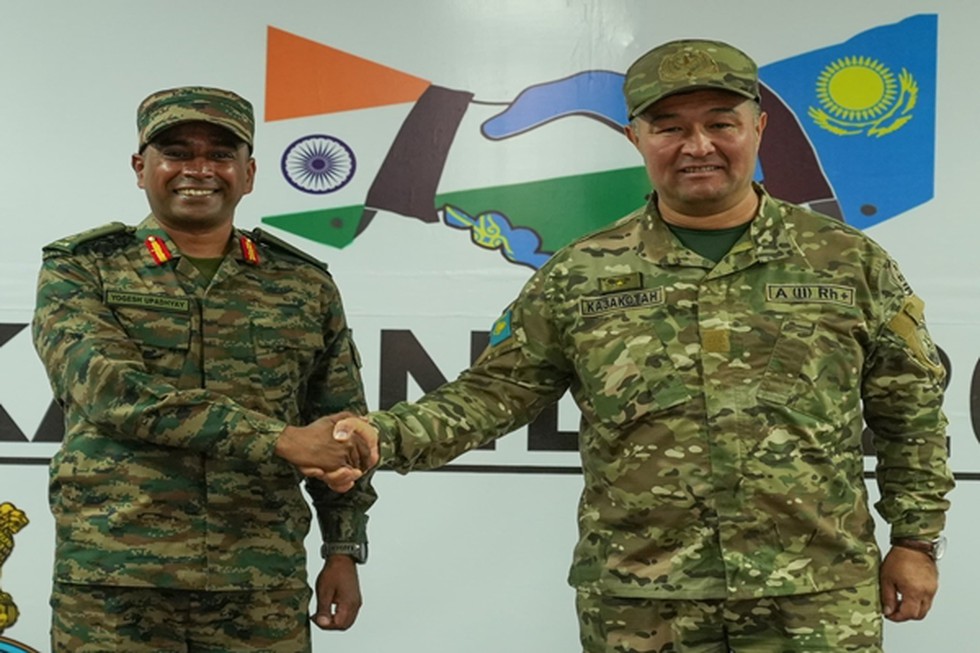
About Exercise KAZIND:
- It is a joint military Exercise held every year between India and Kazakhstan.
- The Indian Armed Forces, comprising 120 personnel, are being represented by a battalion of the KUMAON Regiment of Indian Army, along with other arms and services, as well as personnel from the Indian Air Force.
- The Kazakhstan contingent will be represented mainly by personnel from Land Forces and Air Borne Assault Troopers.
- Aim: To enhance the joint military capability of both sides to undertake counter-terrorism operations in a sub-conventional scenario under Chapter VII of the United Nations Charter.
- It will focus on operations in the semi-urban and mountainous terrain. Objectives to be achieved from the Joint Exercise are a high degree of physical fitness, rehearsing and refining drills for operations at the tactical level and sharing of best practices.
- Tactical drills to be rehearsed during the Joint Exercise include joint response to terrorist action, establishment of a Joint Command Post, establishment of an Intelligence and Surveillance Centre
- Joint Exercise KAZIND-2024 will enable both sides to share best practices in tactics, techniques and procedures of conducting joint operations.
- It will facilitate the development of inter-operability, bonhomie and camaraderie between the two armies. The Joint Exercise will also enhance defence cooperation, further augmenting bilateral relations between the two friendly nations.
5. Tsetse flies
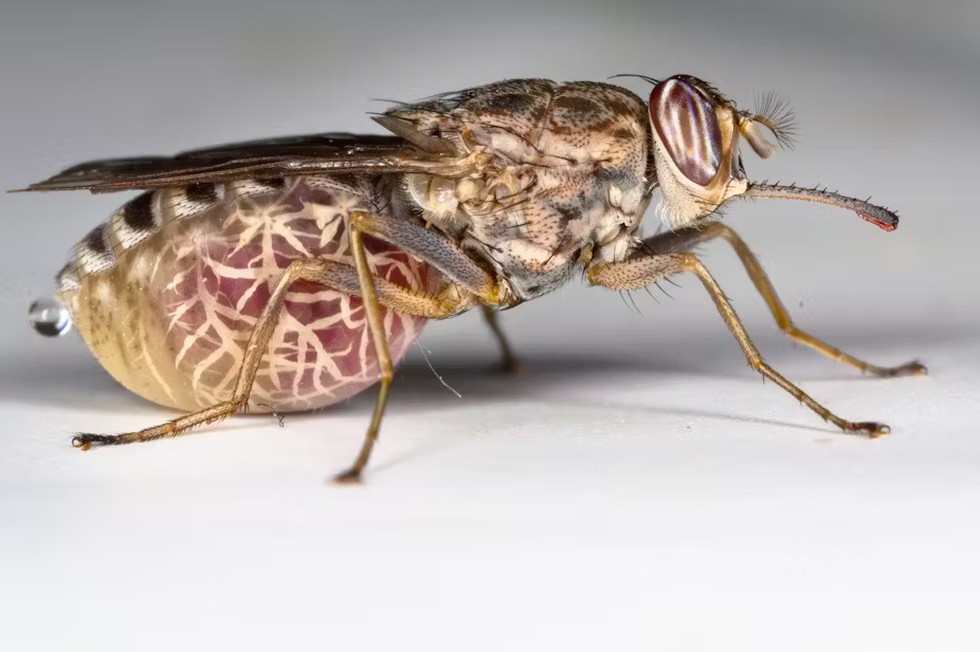
About Tsetse flies:
- Tsetse flies (genus Glossina) are unicellular blood-sucking insects.
- They are holometaboulos insects, females giving birth to full-grown larvae which rapidly pupate in the soil.
- They are arranged taxonomically and ecologically into three groups: the fusca, or forest, group (subgenus Austenina); the morsitans, or savanna, group (subgenus Glossina); and the palpalis, or riverine, group (subgenus Nemorhina).
- Habitat:
- They are found in local patches of dense vegetation along banks of rivers.
- Also found in lakes in arid terrain, and also in dense, wet, heavily forested equatorial rainforest
- They feed on blood and transmit the Trypanosoma parasites, which are responsible for sleeping sickness in humans and animal trypanosomosis or "Nagana" in cattle.
- They are also linked to nagana in African livestock, resulting in annual agricultural losses estimated in the billions of dollars.
- The collected data confirmed the presence of Glossina species in 34 countries, ranging from Northern Senegal (around 15 degrees north) to South Africa (Kwazulu-Natal province at 28.5 degrees south).
6. Key Facts about Kosi River
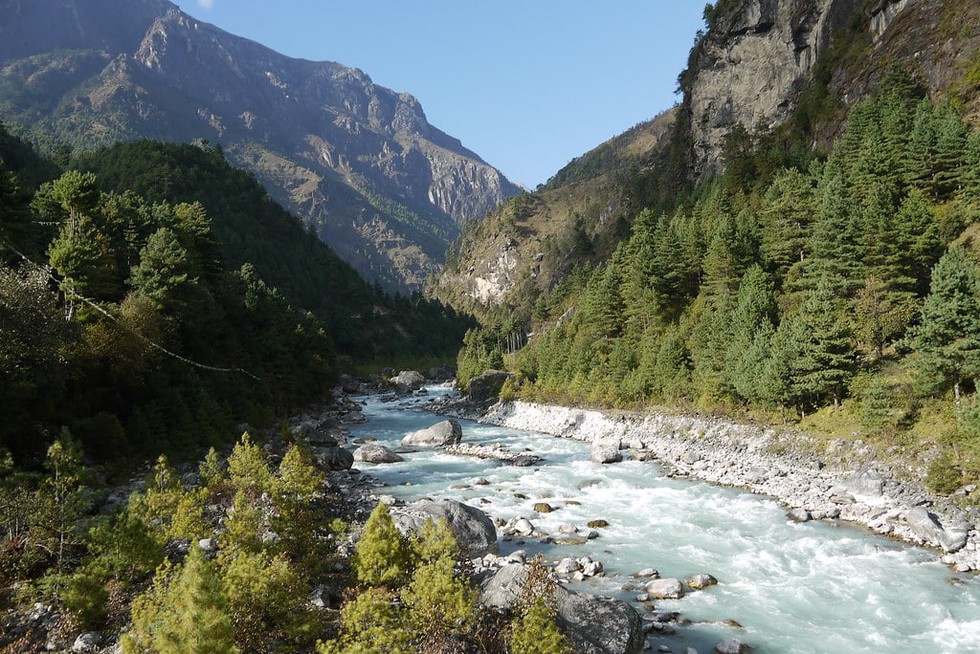
About Kosi River:
- It is atransboundary river which flows through China, Nepal and India.
- It is a prominent tributary of the Ganges.
- Course:
- Origin: The river Kosi is formed by the confluence of three streams, namely the Sun Kosi, the Arun Kosi, and the Tamur Kosi, all of which have their origin in the Himalayan region of Nepal and Tibet.
- About 30 miles (48 km) north of the Indian-Nepalese frontier, the Kosi is joined by several major tributaries and breaks southward through the Siwalik Hillsat the narrow Chatra Gorge.
- The river then emerges on the great plain of northern India in Bihar state on its way to the Ganges River, which it enters south of Purnea after a course of about 450 miles (724 km).
- The Kosi drains an area of 74,500 sq.km, of which only 11,070 sq.km lie within Indian Territory.
- The Kosi River valley is bounded by steep margins that disconnect it from the Yarlung Zangbo River to the north, the Mahananda River to the east, the Gandaki to the west, and the Ganga to the south.
- Because of its great outflushing of debris, the Kosi has no permanent channel in its course through the great plain of northern India.
- It is well known for its tendency to change course generally in a westward direction. During the last 200 years, the river has shifted westwards for a distance of about 112 km and has laid waste large tracks of agricultural land.
- Kosi is known as the "sorrow of Bihar", as it has caused widespread human suffering in the past due to flooding and very frequent course changes when it flows from Nepal to Bihar.
- Tributaries: It has seven major tributaries: Sun Koshi, Tama Koshi or Tamba Koshi, Dudh Koshi, Indravati, Likhu, Arun, and Tamore or Tamar.
7. What are White Goods?

About White Goods:
- White goods traditionally refer to large home appliances such as stoves, refrigerators, freezers and washing machines.
- Originally, such goods were only available in white, hence the designation.
- Today, the same goods are offered in an array of colors but are still collectively referred to as white goods.
- White goods are also used in a different connotation within other categories.
- In fabrics, white goods can refer to home products made from linen, cotton, or other white base materials. This includes curtains, towels, and sheets.
- White goods can also refer to colorless spirits.
- In the alcoholic beverage industry, white goods are often used as a collective designation for colorless spirits such as vodka and gin.
8. Mount Erebus
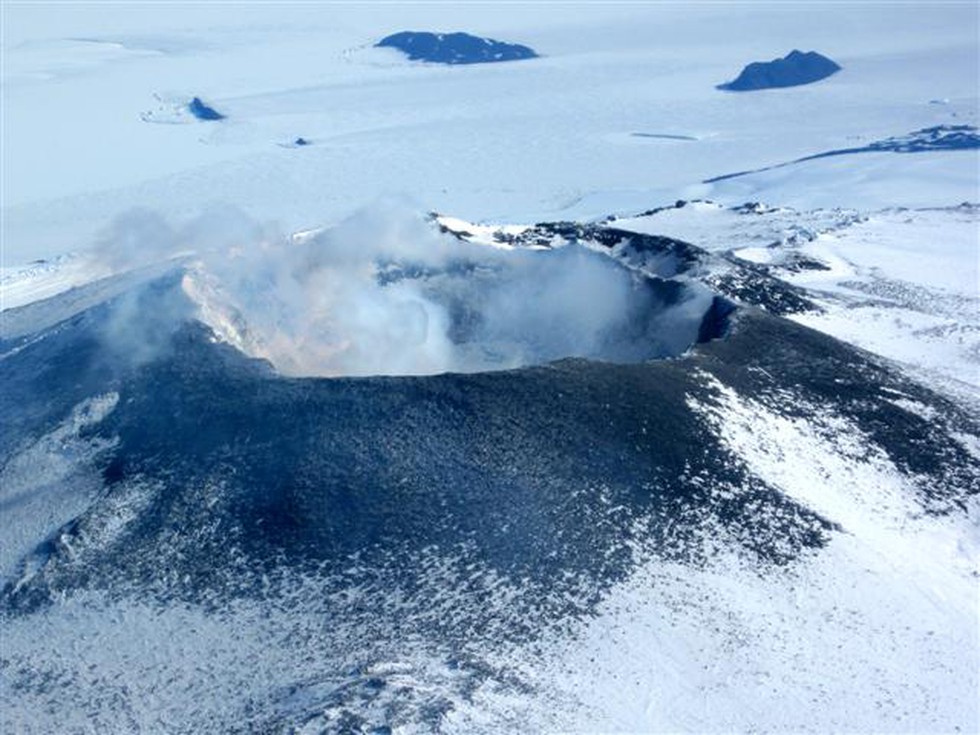
About Mount Erebus:
- It is the world’s southernmost active volcano.
- Location: It is situated on Ross Island, Antarctica.
- It was discovered in 1841 by the British explorer Sir James Clark Ross, who named it after his ship, the Erebus.
- It’s a stratovolcano characterized by a conical shape and layers of hardened lava, tephra, and volcanic ash.
- Mount Erebus is known for its persistent lava lake.
- The lake has been active since at least 1972and is one of only a few long-lived lava lakes on Earth.
- It constantly churns and occasionally spews bombs of molten rock in Strombolian eruptions.
- Because the volcano is in a remote location, researchers monitor it using satellites.
- The largest Antarctic settlement—McMurdo Station, operated by the United States—stands within sight of the volcano (about 40 kilometers or 25 miles away).
9. What is Harpoon Missile?
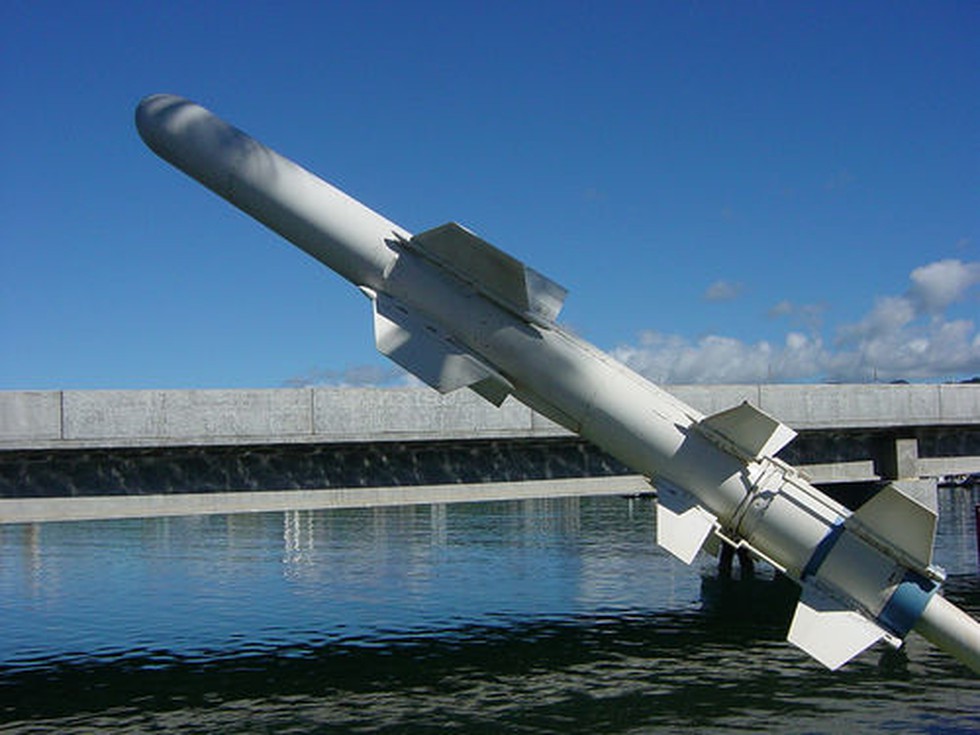
About Harpoon Missile:
- The Harpoon (RGM-84/UGM-84/AGM-84) is a United States-designed subsonic antiship cruise missile that has been in service since 1977.
- Numerous variants have been produced since its inception, including air-, ship-, and sub-launched versions.
- It is currently in service with the armed forces of more than 30 countries, including India.
- Features:
- It is an all-weather, over-the-horizon, anti-ship missile system.
- A single missile measures 4.5 m in length and weighs 526 kg.
- Propulsion: Turbojet, solid propellent.
- Its low-level, sea-skimming cruise trajectory, active radar guidance, and warhead design assure high survivability and effectiveness.
- It is capable of executing both land-strike and anti-ship missions.
- This missile is fitted with a heavy 221-kilogram penetration blast warhead.
- It uses GPS-aided inertial navigation to hit a designated target point.
- Range: 90-240 km
10. What are Neutrinos?

About Neutrinos:
- Neutrinos are tiny subatomic particles, often called 'ghost particles' because they barely interact with anything else.
- Neutrinos are, however, the most common particle in the universe.
- Approximately 100 trillion neutrinos pass completely harmlessly through your body every second.
- Their tendency not to interact very often with other particles makes detecting neutrinos very difficult.
- Neutrinos have no charge; they are neutral, as their name implies.
- They belong to the family of particles calledleptons, which are not subject to the strong force.
- Neutrinos don't interact at all with the strong nuclear force that binds atomic nuclei together, but they do interact with the weak forcethat controls radioactive decay.
- Neutrinos come from all kinds of different sources and are often the product of heavy particles turning into lighter ones, a process called “decay.”
- Neutrinos are created by various radioactive decay, such as during a supernova, by cosmic rays striking atoms, etc.


























































































































































.png)
.png)
.png)
.png)
.png)


.png)
.png)
.png)





.png)
.png)






.png)
.png)
.png)
.png)
.png)
.png)
.png)
.png)
.png)

.png)







.png)
.png)


.png)
.png)
.png)


.png)

.png)
.png)





.jpg)

.png)
.png)


.png)

.png)
.png)
.png)

.jpg)

.jpg)


.png)

.png)
.png)
.png)
.png)
.png)
.png)
.png)
.png)
.png)
.png)




.png)

.png)





.png)
.png)
.png)
.png)
.png)
.png)
.png)
.png)
.png)
.png)
.jpg)
.jpg)

.png)
.png)
.png)
.png)
.png)
.png)
.png)
.png)
.png)
.png)
.png)
.png)
.png)
.png)
.png)
.png)
.png)
.png)
.png)
.png)
.png)
.png)



.png)
.png)

.jpg)
.jpg)


.jpg)
.jpg)
.jpg)
.jpg)
.jpg)

.jpg)








.jpg)
.jpg)
.jpg)
.jpg)
.jpg)

















.jpg)
.jpg)







.jpg)


















.jpg)
.jpg)






























































































.jpg)
.jpg)


























.jpg)

.jpg)










.jpg)








.jpg)




.jpg)










.jpg)


















.jpg)












































.jpg)














.jpg)
.jpg)
.jpg)





.jpg)

.jpg)
.jpg)





































































.jpg)


































.jpg)
.jpg)
















































.jpg)












.jpg)


.jpg)




.jpg)
.jpg)
.jpg)

.jpg)
.jpg)
.jpg)
.jpg)

.jpg)
.jpg)
.jpg)

.jpg)
.jpg)
.jpg)
.jpg)
.jpg)
.jpg)
.jpg)
.jpg)

.jpg)


.jpg)
.jpg)
.jpg)
.jpg)
.jpg)
.jpg)
.jpg)
.jpg)
.jpg)
.jpg)











.jpg)
.jpg)





.jpg)
.jpg)
.jpg)
























.jpg)
























.jpg)









.jpg)
.jpg)







.jpg)
.jpg)









































.jpg)
.jpg)
.jpg)
.jpg)
.jpg)

.jpg)
.jpg)
.jpg)
.jpg)
.jpg)


.jpg)
.jpg)
.jpg)
.jpg)
.jpg)

.jpg)
.jpg)
.jpg)
.jpg)
.jpg)
.jpg)
.jpg)
.jpg)
.jpg)
.jpg)
.png)

.png)
.png)

.png)
.png)
.png)
.png)


.jpg)
.jpg)

.jpg)
.jpg)
.jpg)

.png)
.png)
.png)
.png)
.png)
.png)
.png)

.png)
.png)
.png)
.png)
.png)
.png)
.png)
.png)
.png)
.png)





































































-min.png)



.png)




.png)








































